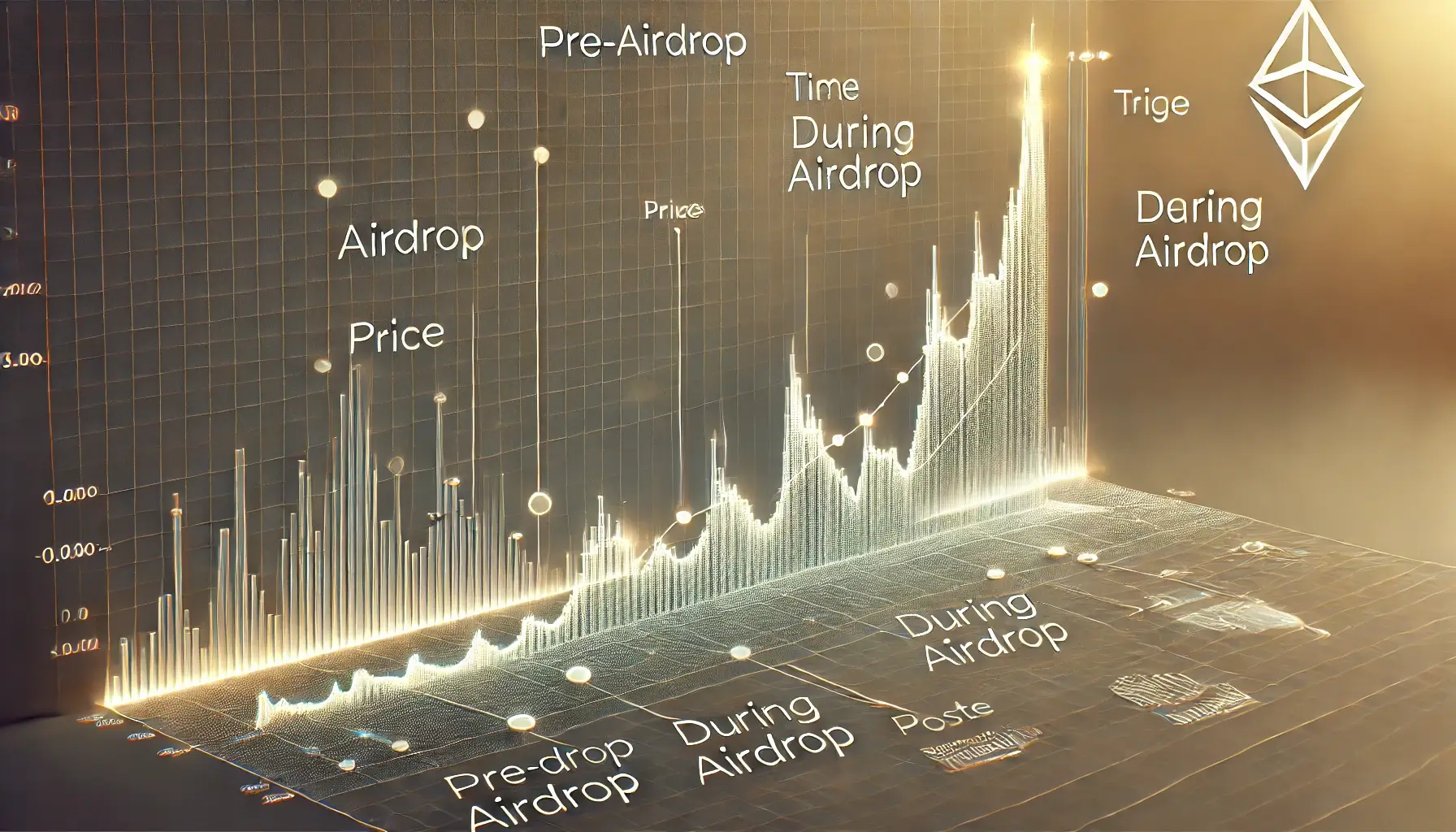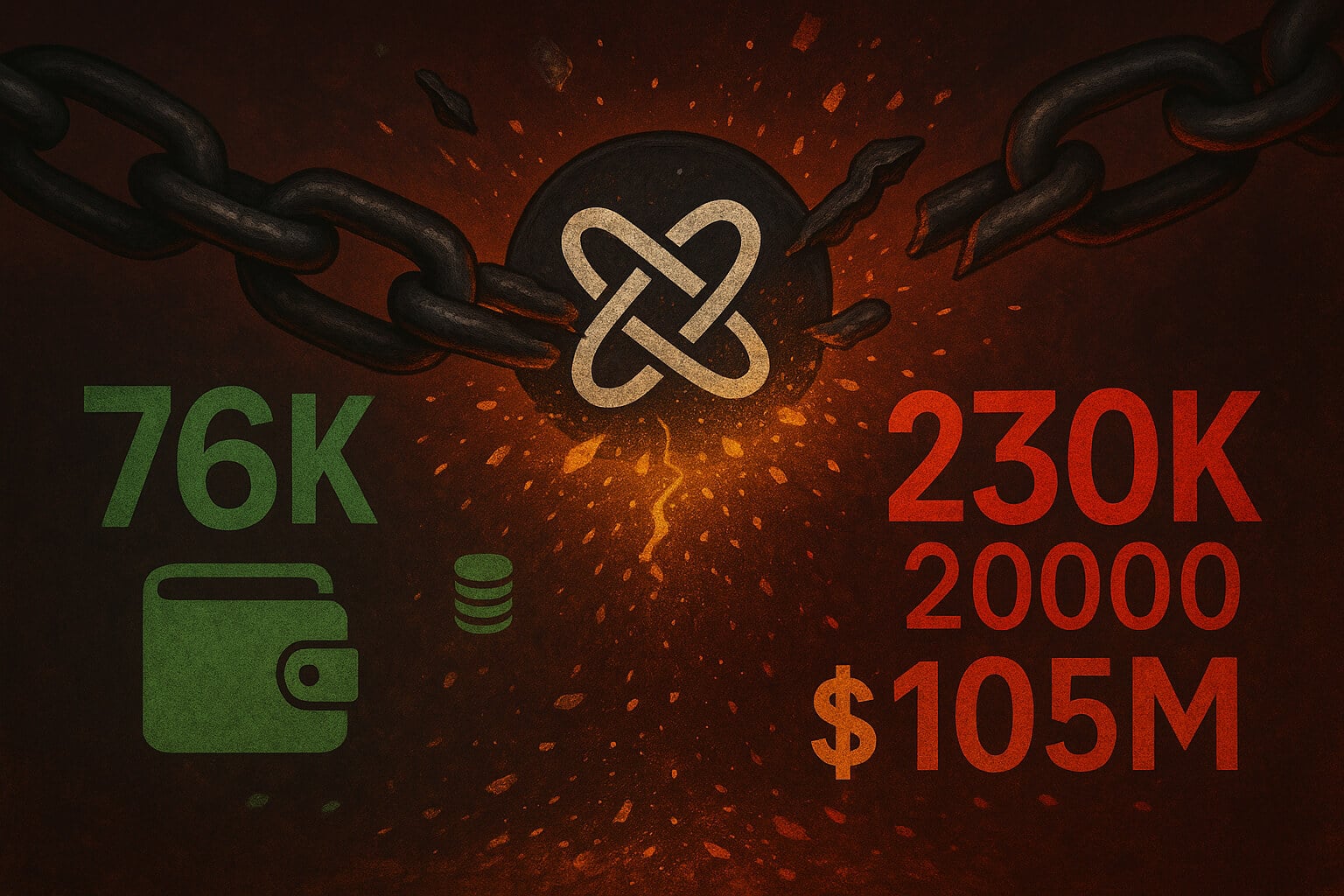Airdrops are a popular marketing strategy in the cryptocurrency world, often used to drive adoption, grow communities, and create buzz around blockchain projects. But they also play a significant role in influencing token price stability, sometimes in ways that may not be immediately obvious.
While airdrops are great for increasing the visibility of a token, they also bring risks of price volatility and short-term market fluctuations. On the other hand, when executed correctly, they can also enhance liquidity, build long-term demand, and contribute to token stability.
In this article, we’ll take a closer look at how airdrops affect token prices, exploring their positive and negative impacts on market behavior and what projects can do to mitigate potential risks.
1. Positive Impacts of Airdrops on Token Price Stability
When used strategically, airdrops can have a stabilizing effect on token prices by encouraging adoption, increasing liquidity, and creating a broader distribution of tokens. Let’s break down these benefits:
a. Increased Liquidity
Airdrops introduce tokens to a larger audience, many of whom may trade these tokens on various exchanges. By increasing the number of holders and traders, airdrops help create greater liquidity, which is crucial for price stability. Higher liquidity reduces the likelihood of extreme price swings because there’s a sufficient volume of tokens available to meet market demand.
b. Wider Token Distribution
Distributing tokens to a broad user base decentralizes ownership, which is beneficial for price stability. When tokens are concentrated in the hands of a few large holders (often referred to as “whales”), the market becomes vulnerable to manipulation and sudden price dumps. Airdrops mitigate this by ensuring tokens are held by a more diverse group of users, leading to more balanced market behavior.
c. Boosting Demand Through Awareness
By rewarding users with free tokens, airdrops attract new participants to the project. Many recipients become interested in learning more about the platform, exploring its features, and even purchasing additional tokens. This increased demand can create upward pressure on the token’s price, offsetting the sell-offs that often follow airdrop campaigns.
2. Negative Impacts of Airdrops on Token Price Stability
While airdrops have clear benefits, they can also introduce risks, particularly when they’re not executed thoughtfully. Here are some potential drawbacks:
a. Short-Term Sell-Offs
One of the most common issues with airdrops is the tendency for recipients to immediately sell their tokens once they’re received. This is especially true for users who join airdrops purely for the rewards, with no intention of engaging further with the project. Such sell-offs flood the market with tokens, causing downward pressure on the price and increasing volatility.
b. Volatility from Speculation
Airdrop campaigns often generate hype, leading to speculative behavior in the market. Traders may buy tokens in anticipation of price increases before the airdrop, only to sell them after the event. This pump-and-dump cycle creates sharp price movements that can destabilize the token’s value.
c. Dilution of Value
Distributing free tokens increases the circulating supply, which can lead to a temporary dilution of value. If demand doesn’t grow in proportion to the increased supply, the token’s price may drop. This is particularly problematic for projects that don’t have a clear plan to stimulate ongoing demand.
3. How Projects Can Mitigate Negative Impacts
To minimize the risks associated with airdrops, blockchain projects can adopt strategies that promote responsible distribution and encourage long-term engagement. Here’s how:
a. Reward Active Participation
Instead of giving tokens away for free with no conditions, projects can design airdrops that reward active participation. For example, users might need to complete specific tasks, such as using the platform, staking tokens, or providing liquidity. This approach ensures that airdrop recipients are genuinely interested in the project and less likely to immediately sell their tokens.
b. Implement Vesting Periods
Introducing vesting periods for airdropped tokens can prevent immediate sell-offs. Under this system, recipients receive their tokens in increments over time, encouraging them to stay engaged with the project for the long term.
c. Focus on Community Building
Airdrops should be part of a broader strategy to build a loyal and engaged community. By fostering strong relationships with token holders, projects can reduce speculative behavior and encourage holders to view their tokens as a long-term investment.
d. Leverage Staking and Governance
Giving airdrop recipients the ability to stake their tokens or participate in project governance adds utility and value to the tokens. This incentivizes users to hold onto their tokens ra ther than selling them, contributing to price stability.

4. Case Studies: Airdrops and Token Price Dynamics
Case 1: Stellar (XLM)
Stellar conducted a large-scale airdrop to distribute XLM tokens to new users. While this initially led to increased selling activity, the campaign also brought significant attention to the project, driving adoption and creating a more liquid market. Over time, Stellar’s price stabilized as its user base grew.
Case 2: Uniswap (UNI)
Uniswap’s airdrop rewarded early users of the platform with UNI tokens. Instead of causing instability, the campaign helped decentralize governance and incentivized token holders to stay involved in the project. This contributed to long-term price growth and market confidence.
5. The Long-Term Impact of Airdrops
When planned and executed effectively, airdrops can have a positive long-term impact on token price stability. They introduce tokens to a wider audience, increase liquidity, and foster a sense of community among holders. However, projects must carefully balance the short-term risks of volatility with the long-term benefits of broader adoption.
By focusing on community engagement, utility, and responsible distribution, blockchain projects can ensure that their airdrop campaigns strengthen their ecosystems and contribute to sustainable price trends.
Conclusion
Airdrops are a double-edged sword when it comes to token price stability. While they offer significant benefits, such as increased liquidity and wider distribution, they can also introduce short-term volatility if not managed properly.
The key lies in designing airdrop campaigns that encourage active participation, reward loyalty, and align with the project’s long-term goals. By doing so, blockchain projects can harness the power of airdrops to build strong communities, drive adoption, and create a stable market for their tokens.
For more insights and guides on cryptocurrency strategies, visit our Cryptocurrency Comparisons Guides.
Stay Updated:
For the latest updates on token price trends and blockchain innovations, follow us on:
Special Offer:
Ready to trade your airdropped tokens? Sign up on Bybit today and claim up to $30,000 in deposit bonuses. Explore the best platform for growing your crypto portfolio!

















